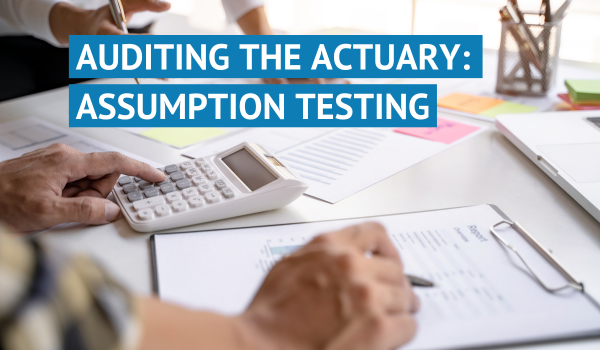Lifespan vs. Healthspan – Impact on OPEB and Pensions
April 30, 2024|Kurtis Thompson

Bottom Line Up Front
- Lifespan, the average length of life, and healthspan, the average length of healthy living, are two crucial concepts gaining attention recently.
- While lifespans have generally increased over generations, recent trends show a slight decline, while healthspans have decreased even more, leading to increased time spent battling health issues later in life.
- These trends have significant implications for Pension and OPEB plans, with longer lifespans increasing costs for both, and a widening gap between healthspan and lifespan driving up healthcare expenses and liabilities for OPEB plans in particular.
Lifespan receives considerable attention, often being viewed as a measure of human development, especially as it continues to increase. However, there’s a growing focus on another concept called Healthspan, which hasn’t received as much recognition until recently. Healthspan refers to the length of time an individual remains healthy and functional, as opposed to simply living longer. Understanding the difference between these two concepts is crucial, particularly in considering the future implications for OPEB (Other Post-Employment Benefits) and Pension Plans.
Understanding Lifespan and Healthspan
Lifespan is the average length of time people live today, often used synonymously with “life expectancy”. As a matter of course people are very interested in how long they can expect to live based on the average lifetime of other people. Until recently there has been a general trend of lifespans growing longer and longer every generation. Even with some recent decreases in life expectancy, a person born today can expect to live a longer life than their grandparents.
Healthspan is the average length of time that people can expect to remain in optimal health. Over the last ten years, this concept has gotten more focus, especially with attention-grabbing ideas like Dr. Ezekiel Emanuel’s article “Why I Hope to Die at 75”. The most recent data shows that even as lifespans have decreased slightly over the last several years, healthspans have been decreasing by more than lifespan resulting in the average American spending more time late in life battling serious health issues.
Impact on Pension and OPEB Plans
How do these changes affect Pension and OPEB plans? Longer lifespans are going to mean higher costs for both Pensions and OPEB plans. The Actuary has mortality assumptions built into the valuation, and if more and more people outlive their projected life expectancy that means the plans must make benefit payments for more years than expected. Recent declines in lifespan help contain costs on Pension and OPEB plans as people don’t live as long as expected and therefore receive fewer years of benefit payments than expected.
Healthspan has a different effect on Pension versus OPEB plans. For Pension plan liabilities, healthspan doesn’t matter at all. A participant doesn’t need to be healthy to receive a benefit payment, they just need to be alive. For OPEB plans the story is different. A widening gap between people’s healthspan and lifespan means more years of what will tend to be more expensive medical care. This will tend to have the effect of driving up health insurance premiums, therefore increasing the OPEB plan’s expected benefit payments and liabilities.
Forecasting Future Trends
Some think the recent trend of shortening lifespans will reverse back to the trend of increasing lifespans. However, it seems possible that the gap between healthspan and lifespan will continue to grow as more medical treatments become available to extend lives. A reversion to the trend of increasing lifespans and decreasing healthspans could drive up the cost in the future for both Pension and OPEB plans.
Navigating The Intersection of Lifespan and Healthspan in Retirement Planning
When it comes to retirement planning, the concepts of lifespan and healthspan play pivotal roles in shaping the future of Pension and OPEB plans. While longer lifespans forecast increased financial obligations, the widening gap between healthspan and lifespan presents unique challenges, particularly when it comes to healthcare. With thoughtful and strategic foresight, you can navigate these complexities to ensure the sustainability and resilience of retirement benefits.
If you have questions about the topic we covered, or if you’re seeking advice on any other challenges you may be facing, we’re here to help. Our team of experienced actuaries and actuarial consultants are always ready to offer guidance. Feel free to reach out to us here.

About The Author Kurtis has been a consultant on the Odyssey Advisors team since 2013 and has developed extensive knowledge and expertise in developing and administering retirement benefit solutions. Kurtis is passionate about helping people achieve the retirement they’ve always dreamed of...
More Insights From This author








